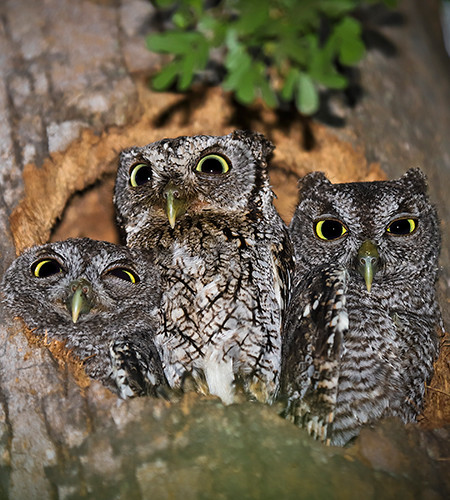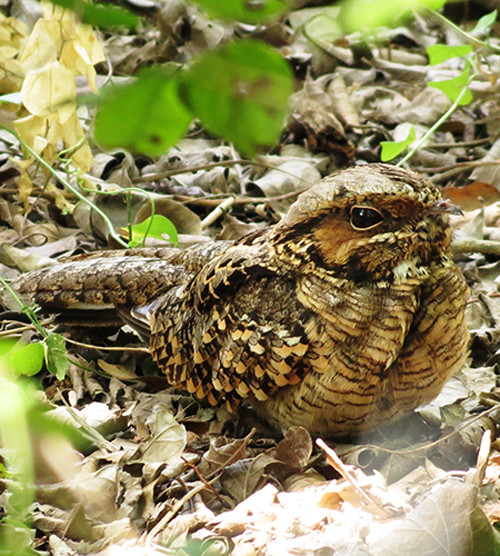 Colleen Curran Hook, Executive Director of Quinta Mazatlan
Colleen Curran Hook, Executive Director of Quinta Mazatlan
Springtime means new baby birds and celebrates rebirth and motherhood. Mother birds take parenting very seriously from building the nest to incubating the eggs and to finding food for her young. To quote Proverbs 31:10-31, “A mother’s work is never done”.
Bird nests are fascinating and as a general rule, the mother is the skilled builder designing the nest for support, shelter and camouflage. Some nests are intricately designed and others are scrapes in the ground. Let us look at the seven styles of Avian Architecture!
The simplest nests are SCRAPE NESTS where birds lay eggs directly on the Thornforest floor. Female Pauraques lay two speckled pink to brown eggs on fallen leaves so the eggs are well camouflaged.
A number of birds nest in holes and tunnels, called CAVITY NESTS. Woodpeckers are the primary excavators of cavity nests. The interior cavity may be bare or could be lined with soft materials.
One of the most impressive nests is also the smallest, the CUP NEST. A Buff-bellied Hummingbird makes a cup nest out of plant fibers, mosses and spider webs. Many hummingbirds will camouflage the outside with bits of lichen so at a distance the nest looks like a bump on a branch.
Some birds build MUD NESTS to lay their eggs. Barn Swallows build in close proximity to each other and line their mud nests with cotton-like plant fibers, strips of bark, fine grass and feathers. An avian adobe home!
PLATFORM NESTS are usually large and made of twigs or sticks. The surface is typically flat. Birds like the Great Blue Heron, Bald Eagle and many other raptors use a platform nest. White-winged Doves and Curve-billed Thrashers also build twig nests typically in ebony, mesquite or prickly pear habitat.
Domed nests or SPHERE NESTS are almost completely enclosed and provide great protection and camouflage. Great Kiskadees build domed nests, a woven structure about 15” tall and 10” wide with a side entrance. The top of the nest hangs over the entrance hole like an awning.
The most complex nest is the long hanging nest of an Altamira Oriole. The PENDANT NEST involves weaving and making sophisticated knots of plant fibers. The long nests dangle from the end of branches so larger predators cannot stand on the thin branches. The birds enter the nest through an entrance on the side.
For a majority of the birds the nests serve only as a cradle for the babies. Birds do not live in their nests the way humans live in their homes. Built to hold the eggs and the young, the nests are abandoned once the babies learn to fly. The nests are all remarkable for their inventive use of local materials to provide support, shelter and camouflage for the young.
Occasionally you may find a baby bird outside its nest and if not injured, it is best to leave the baby bird where you found it. In some cases, the baby bird is exploring and learning to fly with their mother nearby. Wildlife mothers are devoted to their young. Because she must find food for herself and her baby, she must leave the nest occasionally. A mother knows exactly where her babies are and would never abandon them.
So here’s to all the SUPERMOMS around the world that keep it together, no matter how wild life gets. Follow Quinta Mazatlán on Facebook, Twitter, Instagram, and Youtube @QuintaMazatlan to learn more about our natural heritage in the Rio Grande Valley of South Texas.













